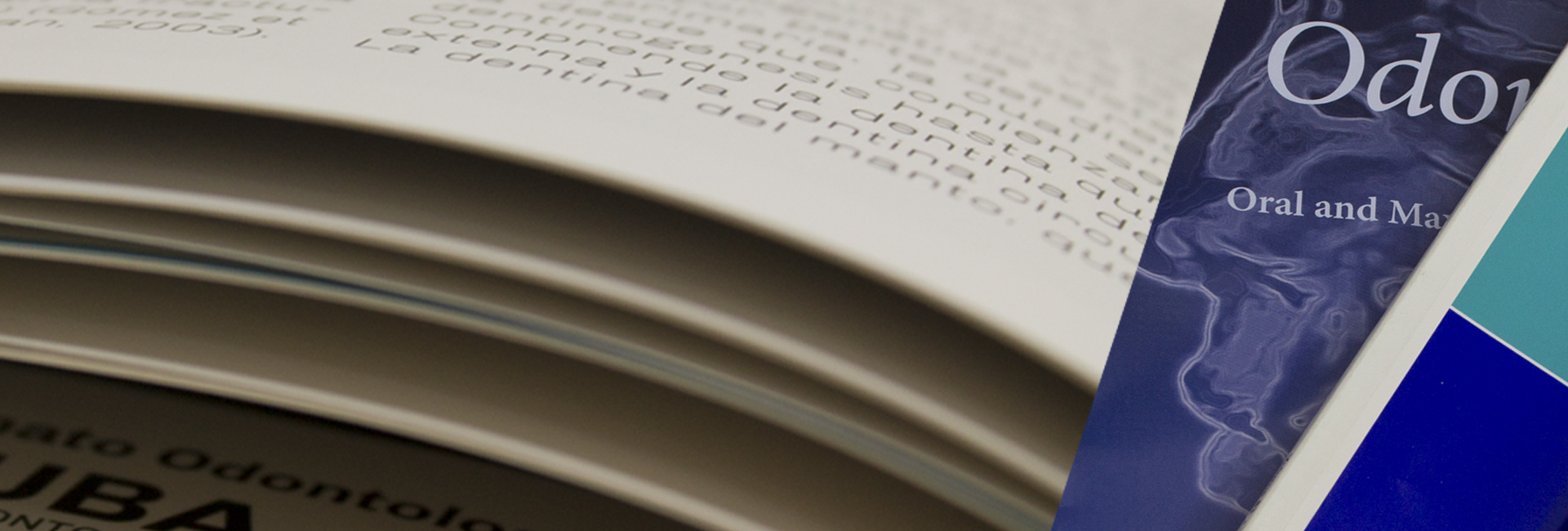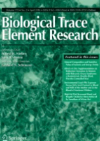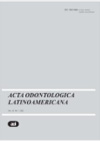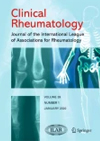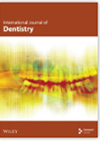
Fluoride Content, Availability, and Stability in a Propolis-Based Dentifrice
Fecha de Publicación: Febrero 2025
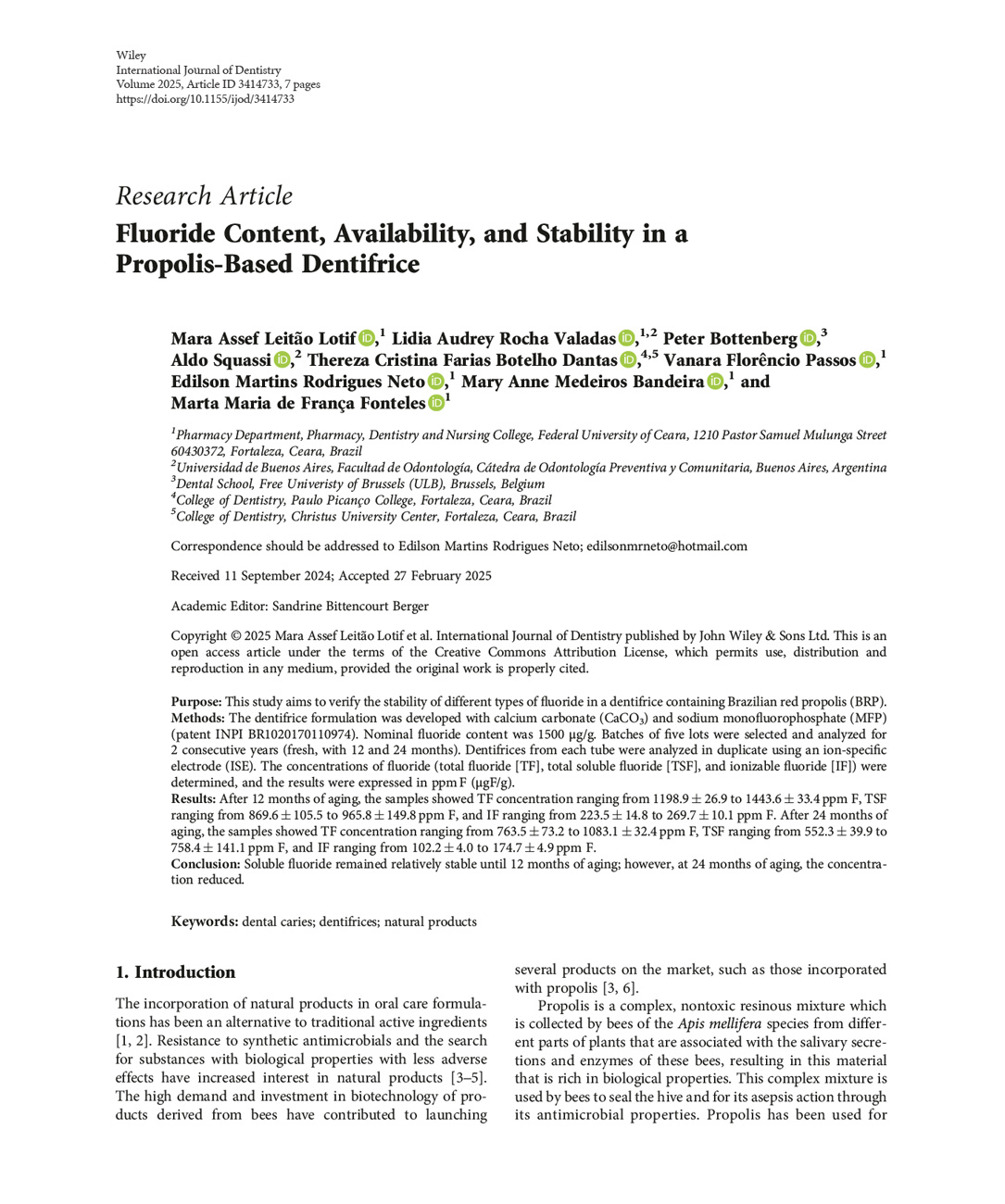
Referencia
Correspondence should be addressed to Edilson Martins Rodrigues Neto; edilsonmrneto@hotmail.com
Received 11 September 2024; Accepted 27 February 2025
Academic Editor: Sandrine Bittencourt Berger
Copyright © 2025 Mara Assef Leitão Lotif et al. International Journal of Dentistry published by John Wiley & Sons Ltd. This is an
open access article under the terms of the Creative Commons Attribution License, which permits use, distribution and
reproduction in any medium, provided the original work is properly cited.
Resumen general
Purpose: This study aims to verify the stability of different types of fluoride in a dentifrice containing Brazilian red propolis (BRP).
Methods: The dentifrice formulation was developed with calcium carbonate (CaCO3) and sodium monofluorophosphate (MFP) (patent INPI BR1020170110974). Nominal fluoride content was 1500 μg/g. Batches of five lots were selected and analyzed for 2 consecutive years (fresh, with 12 and 24 months). Dentifrices from each tube were analyzed in duplicate using an ion-specific electrode (ISE). The concentrations of fluoride (total fluoride [TF], total soluble fluoride [TSF], and ionizable fluoride [IF]) were determined, and the results were expressed in ppm F (μgF/g).
Results: After 12 months of aging, the samples showed TF concentration ranging from 1198.9_26.9 to 1443.6_33.4 ppm F, TSF ranging from 869.6_105.5 to 965.8_149.8 ppm F, and IF ranging from 223.5_14.8 to 269.7_10.1 ppm F. After 24 months of aging, the samples showed TF concentration ranging from 763.5_73.2 to 1083.1_32.4 ppm F, TSF ranging from 552.3_39.9 to 758.4_141.1 ppm F, and IF ranging from 102.2_4.0 to 174.7_4.9 ppm F.
Conclusion: Soluble fluoride remained relatively stable until 12 months of aging; however, at 24 months of aging, the concentration reduced.
Keywords: dental caries; dentifrices; natural products

